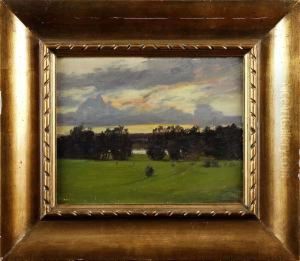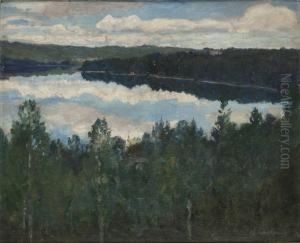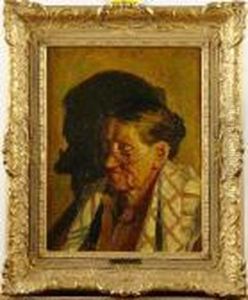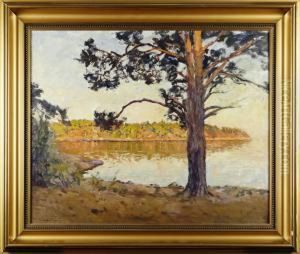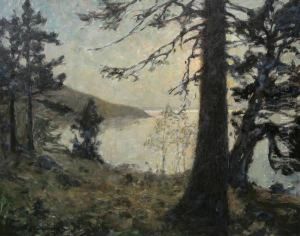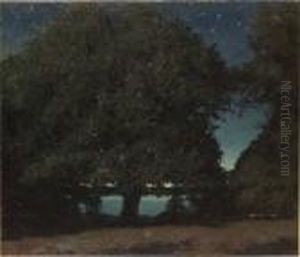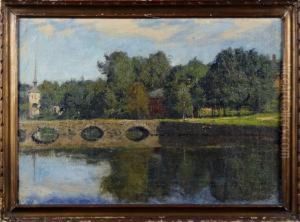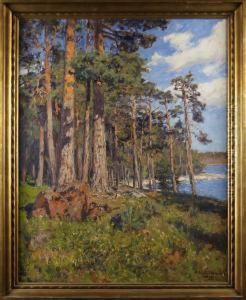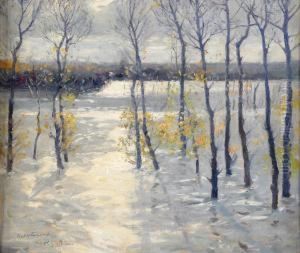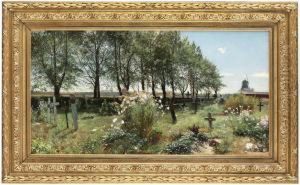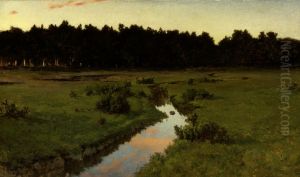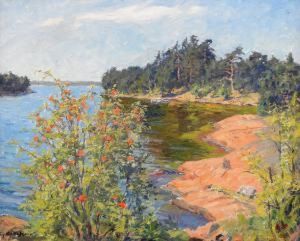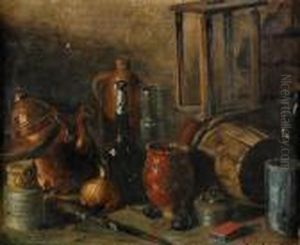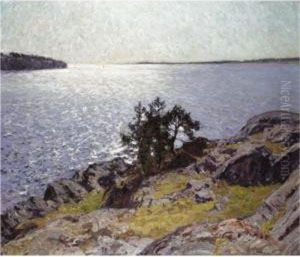Gottfrid Kallstenius Paintings
Gottfrid Kallstenius was a Swedish painter known for his landscape paintings and portraits. Born on December 8, 1861, in Reftele, Sweden, he initially pursued a career in engineering and studied at the Technical School in Stockholm. However, his passion for art led him to change career paths. Kallstenius went on to study art at the Royal Swedish Academy of Arts in Stockholm, where he honed his skills between 1881 and 1887.
During his time at the Academy, he was influenced by the works of Swedish artist Per Ekström, which inspired him to focus on landscape painting. Kallstenius continued his studies abroad, traveling to Paris to learn at the Académie Colarossi, one of the leading private art schools for international students. This experience exposed him to the broader currents of European art, including Impressionism, which would leave a lasting impact on his work.
Upon returning to Sweden, Kallstenius settled in the region of Österlen, which provided him with rich natural scenery to paint. His works from this period exhibit a clear influence of French Impressionism, with a distinctive use of light and color to capture the varying moods of the Swedish landscape. Kallstenius was also known for his portraiture, and he received commissions to paint various prominent figures of his time.
Kallstenius was active in the Swedish art community and participated in numerous exhibitions. His art was well received, and he gained a reputation as a skilled landscape painter. He was a member of the Royal Swedish Academy of Arts and was awarded the Litteris et Artibus, a royal medal for recognition of significant contributions to culture.
The artist's later years were marked by a continued dedication to painting, although his style evolved over time. He moved away from the pure Impressionistic approach and adopted a more realistic style, while still maintaining a focus on the interplay of light and shadow.
Gottfrid Kallstenius passed away on November 27, 1943, in Djursholm, Sweden. Today, his works are part of several museum collections in Sweden and are recognized for their contribution to the development of Swedish landscape painting in the late 19th and early 20th centuries.












